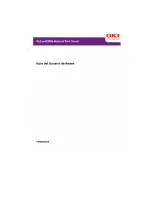
ESC/P Command Reference
- 68 -
5. Control Command Details
Summary
Printing the character string “123456789” with a cell size of 4 dots, Model 2, standard error correction level,
and automatic data input
Without Structured
Append
ESC i Q 04h 02h 00h 00h 00h 00h 02h 00h “123456789” \\\
With Structured
Append
[Three partitions]
ESC i Q 04h 02h 01h 01h 03h 31h 02h 00h “123” \\\
ESC i Q 04h 02h 01h 02h 03h 31h 02h 00h “456” \\\
ESC i Q 04h 02h 01h 03h 03h 31h 02h 00h “789” \\\
(The parity for the character string “123456789” is 31h.)
(2) [Barcode data]: Barcode data
When manual input is selected in 8 (data input method), the barcode data must be preceded with one of
the following single-byte alphanumeric characters.
Barcode
Type
Preceded
Character
Example
Number input
N or n
-
Alphanumeric
character input
A or a
ESC i Q [other parameters] 1 A012345678aBcDe \\\
Kanji character
input
K or k
ESC i Q [other parameters] 1 K kanji character input \\\
Binary character
input
B or b+4-digit
number
ESC i Q [other parameters] 1 B0005#### \\\
With the “4-digit number”, specify the number of binary
characters to actually be entered. For example, if 12 binary
characters are to be entered, specify:
B 0012 (30h, 30h, 31h, 32h)
The number of barcode data characters that can be entered depends on the model type and the input
method.
Model 1
707 English alphanumeric characters, 1167 numbers, 486 binary bytes, 299
kanji characters
Model 2
4296 English alphanumeric characters, 7089 numbers, 2953 binary bytes, 1817
kanji characters
Micro QR
21 English alphanumeric characters, 35 numbers, 15 binary bytes, 9 kanji
characters
Note
The numbers listed above are for an error correction level at a high-density level (L 7%).
If the standard level or higher is set, the number of characters that can be entered may decrease. In
addition, even if the characters are entered with the high-density level (L) specified, the number of
characters that can be entered may decrease due to compression.
















































